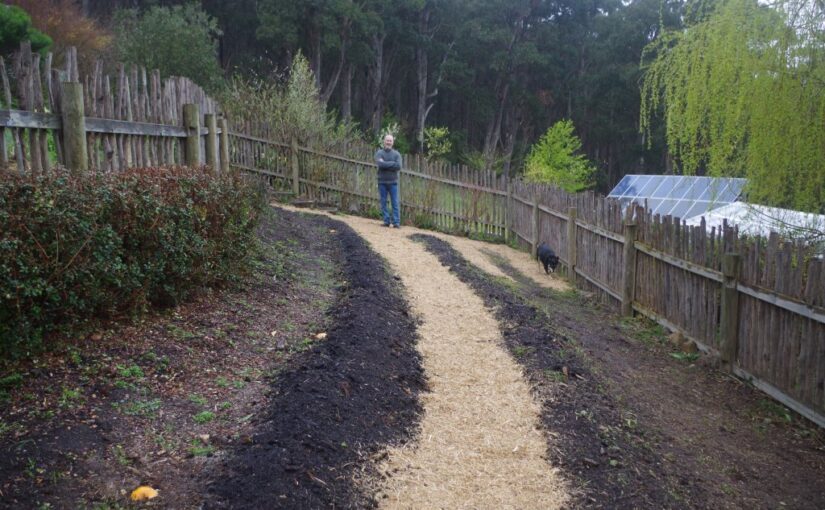A few days ago a big storm spread its wings over this part of the country. The origins were from that huge frozen continent to the south. With only the Southern Ocean between here and there, those storms sure do bring some cold and wet weather. The wood heater ran for two full days. We were warm. The dogs were warm. Outside, not so much. One morning we awoke to 1’C / 34’F temperatures, but there was no snow. Funnily enough, we haven’t seen snow here this year, or last year, or maybe even the year before that.
The highest reaches of this mountain range are about 300m (1,000ft) higher in elevation. It sure is cold up there, and only a few hardy souls live near to that ridge line. It does have the benefit of staying greener even in the hottest of summer weather. But the winters are probably a bit challenging. They did have a day of snow up there in about mid to late June this year, but that was about it. I only became aware of the snow because a vehicle owned by one of those hardy souls left a bunch of snow on the road near to the general store. I had to work that day, and said to myself that I’ll check out the snow next time around. Well that was a missed opportunity.
Old timers used to say that in an ordinary winter, the mountain range would get about ten snow days per year. Even at this lower elevation, we’d normally expect to get at least one snow day per year. But that hasn’t happened going on three winters now. But then, the old timers used to say that you couldn’t grow citrus trees in this mountain range. Au contraire, we grow plenty of citrus trees here! I’d have to suggest that the climate has shifted since those days.
A lot of things are like that nowadays. You assume that they’re one thing, and you’re not even remotely correct with the assumption. Always unpleasant to discern the true state of your knowledge! A week or two ago I mentioned the issues with the chainsaw sharpening process when using the electric grinder (an excellent machine, if used properly). There was a whole new twist to that story this week, the grinder discs sold to me by the nice machinery folks way back in the day, were for the wrong width chain. Turns out that there is a 3/8 chain, and also a 3/8 LP chain. LP being an acronym for ‘Low Profile’, which incidentally is far more commonly found. When I’d bought the machine years ago, I’d asked for a grinding disc for the bigger 3/8 chain, but instead got the 3/8 LP version instead. That wrong disc is 1.6mm thinner (about 1/15 of an inch). That tiny measurement might not sound like much, but I can assure you it makes a world of difference to the effectiveness of the chainsaw.
Anyway, recently I had to invest a lot of brain capacity to the subject of how exactly chainsaws work. You would think that the topic would be simple and straight forward, but no. I know better now, and a thicker grinding disc was purchased online and arrived in the mail. The thicker disc was then installed on the electric chain sharpening machine. For penance I sharpened about a dozen old chains this week. It took a few hours, but the results speak for themselves, and the saws all now cut beautifully. Turns out with such knowledge, sometimes people selling you this stuff maybe don’t know themselves, or make assumptions which are plain old incorrect.
On the desk next to my computer keyboard is a small booklet. It has an odd title: The Fuse Bible. It’s the 21st edition too. As you’d imagine, the book is full of useful information and specifications regarding fuses. You personally may not think much of fuses, but earlier in the year I installed five new fuses, whilst at the same time replacing the sixteen other older fuses in the battery room.
The fuse problem earlier in the year was another technology issue too. Late last year, one of the original fuses in the battery room failed catastrophically. The fuse destroyed itself, and fortunately the initial problems didn’t extend any further than that. It was a bit of a mess. Again I had to invest some spare brain capacity and ask the hard questions: Why and how did the fuse fail?
After absorbing a lot of boring details on the subject of extra low voltage fuses, I replaced all of the fuses with far more sturdier devices. Given the risk of failure, the effort and expense was worth it. And talking about expense, people tell me with a straight face that this renewable energy stuff is only ever getting cheaper. The facts are otherwise and just two fuses alone, cost what people pay on average for their monthly electricity bills, and there were 21 of the things! This stuff is not cheap, and makes no economic sense whatsoever.
The fuse book is no longer needed, but I keep it there as a reminder to never make assumptions, or take the nice people at their word. How does this thing work, and what do the specifications have to say about the item, are the sort of questions I ask nowadays. By and large, people don’t ask such questions. A good example of this incoherence has been in the media for the last two weeks. They’ve been whingeing about the dearth of cheap international flights. Apparently they want more and cheaper. The same folks also seem to want action on climate change, and apparently we’re also going to have a super hot summer. To my way of thinking, it’s a really confused world-view to demand action on something, whilst massively contributing to the same problem. My brain can’t handle such complexities, I’m just wondering where all the snow has gone.
In between the cold and wet weather this week, we’ve been getting more of the garden beds ready for the coming growing season. This week, the sapling fenced enclosure where we grow pumpkins and squashes was cleaned up and fed. The two long rows are ready to take seedlings once the weather warms up a bit. Already, we’ve planted out several squashes that had gone mouldy in the hope that this process produces new seedlings. The experiment is worth the effort. It may even work given such discarded fruits can produce seedlings in compost piles.

Observant readers will note that between the two rows we’ve created an all weather surface using a couple of bales of sugar cane mulch.
Over the past year we’ve been slowly constructing a much larger vegetable / citrus enclosure. The thing is huge at around 600 square metres (6,500 square feet). I did say it was big. Two gates and eight posts had been installed months ago, and this week I used the hand turned auger to dig another dozen holes for posts. Hopefully in the next week or two, we’ll have the posts cemented into the ground and then begin on the job of fencing.

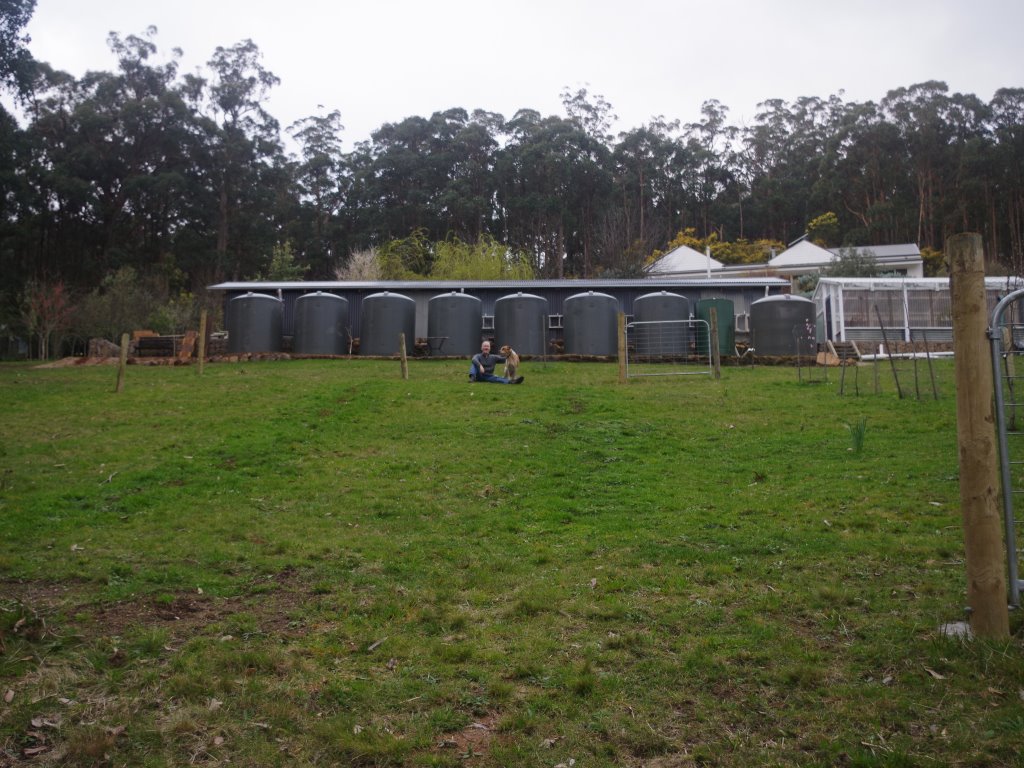
Long term readers will recall our issues with kale where we’d stripped most of the nitrogen from the soil, by running kale in the same ground for a few years in a row. Since that incident, we’ve been giving some serious thought as to crop rotation. This new much bigger enclosure will provide for more growing space, and we’ll be able to rest up garden rows, or even move them around to new locations within the available space.
The soil removed from the dozen post holes was relocated near to the collection of water tanks. We’re doing a bit of landscaping around the water tanks, and will eventually install a rock wall along the entire length of the area where the tanks sit.

The wildlife which roam through the orchards at night have recently been assisting with pruning. It’s very thoughtful of them. A wallaby (a smaller (and possibly angry) lone forest kangaroo) decided that the mandarin required pruning:

And the wombat decided to chew through a very spiky cactus. Anything that can eat that particular plant is a creature to be feared!
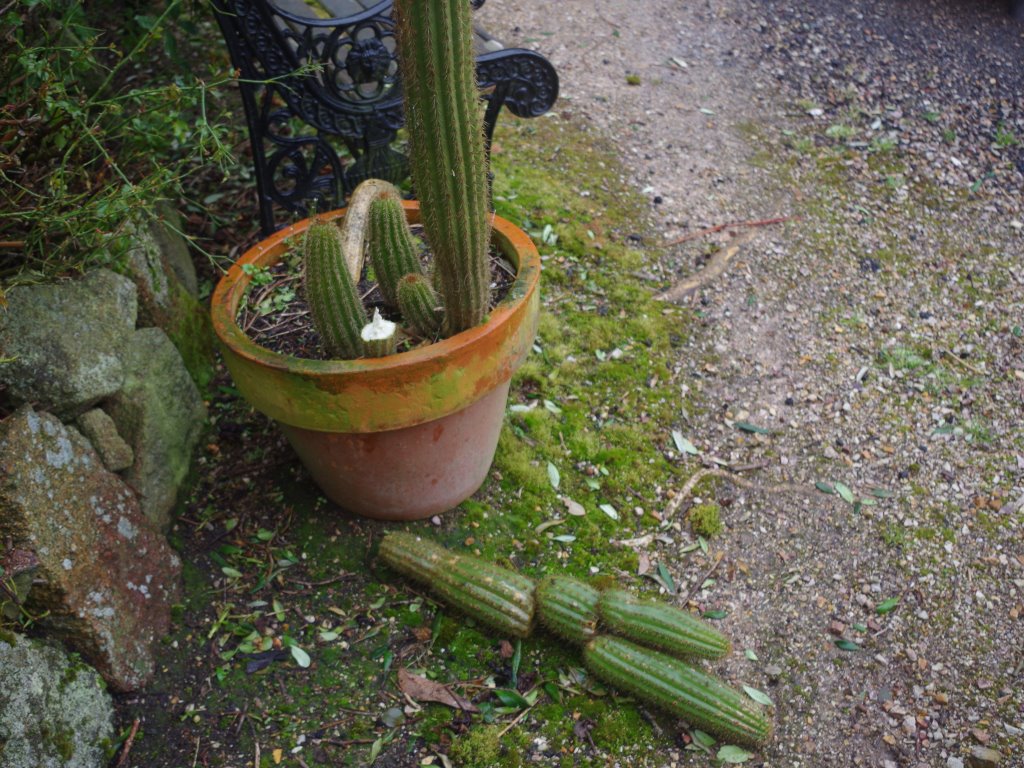
The protein levels in the plants are still a bit low at the moment, thus the level of destruction. This problem will go away in the next few weeks as the UV radiation from the sun increases, and the plants respond to the extra energy by producing more protein. Fortunately, the wildlife haven’t discovered the peas we planted out last week, because a couple of them have germinated.
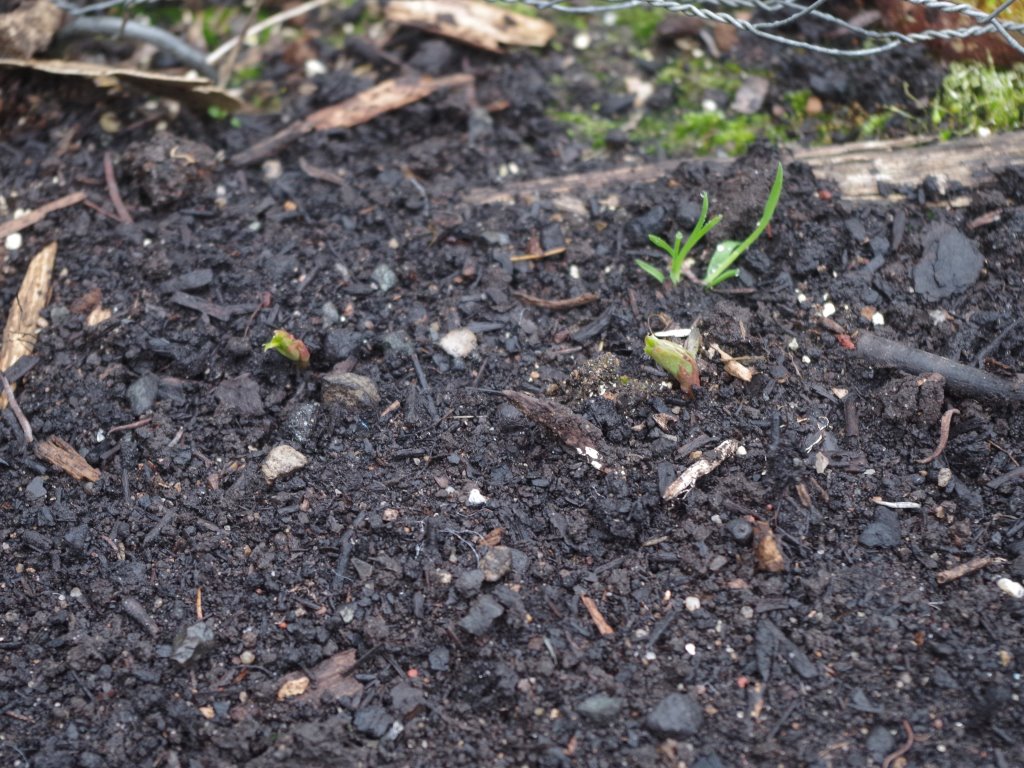
Trffid alert! One of the three hops vines has begun growing. Candidly, the rate of growth is a bit scary given just how many shoots popped up in only a few days!
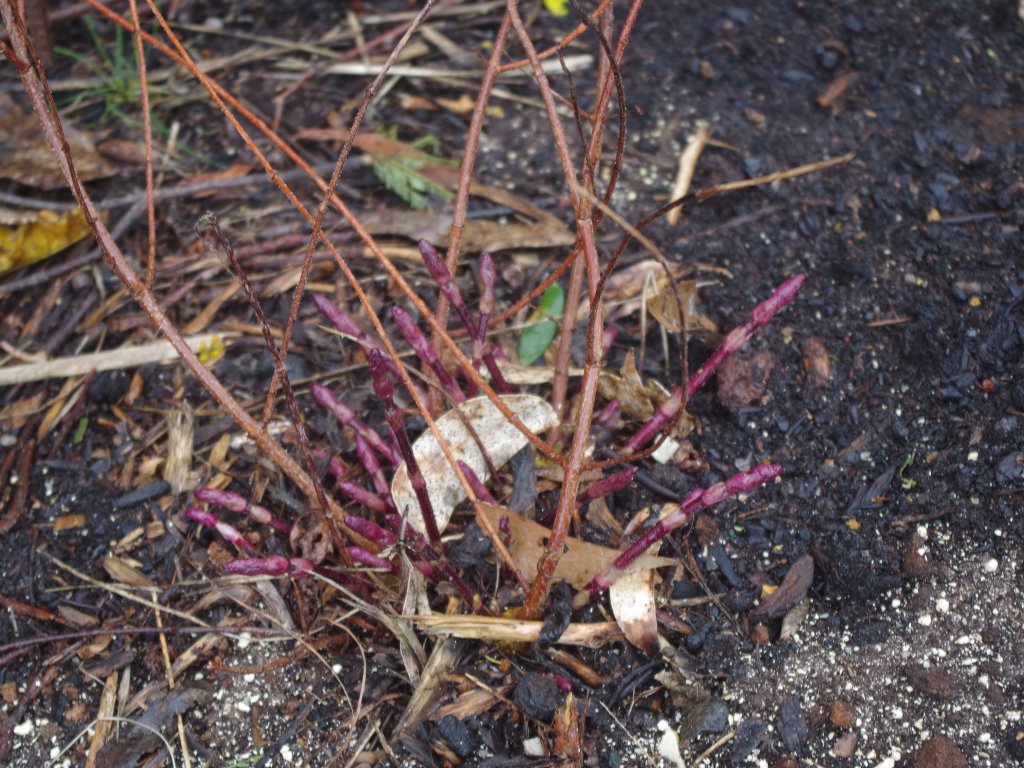
Some of the early fruit trees have broken their dormancy and produced blossoms. Despite the cold temperatures this week, I didn’t notice any frost, so fingers crossed that the blossoms don’t wither and die. It’s been a few years since we’ve managed to harvest any apricots and other stone fruits, and they’re very tasty.
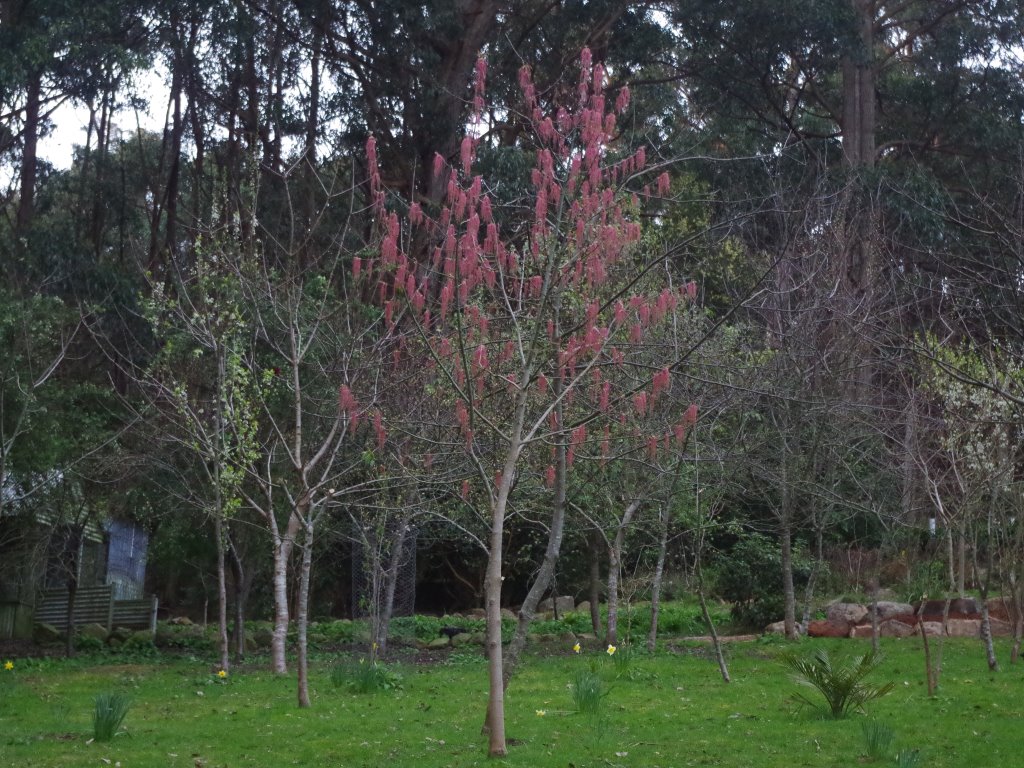
Onto the flowers:



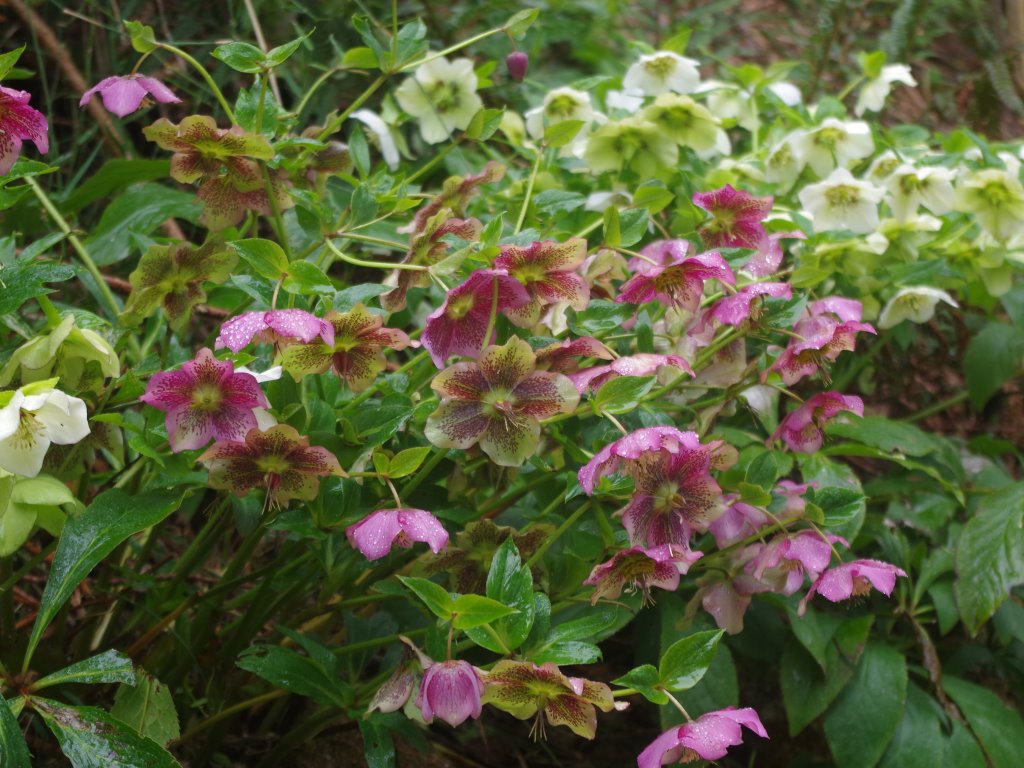

The temperature outside now at about 9am is 7’C (48’F). So far this year there has been 647.6mm (25.5 inches) which is up from last weeks total of 622.0mm (24.5 inches)
